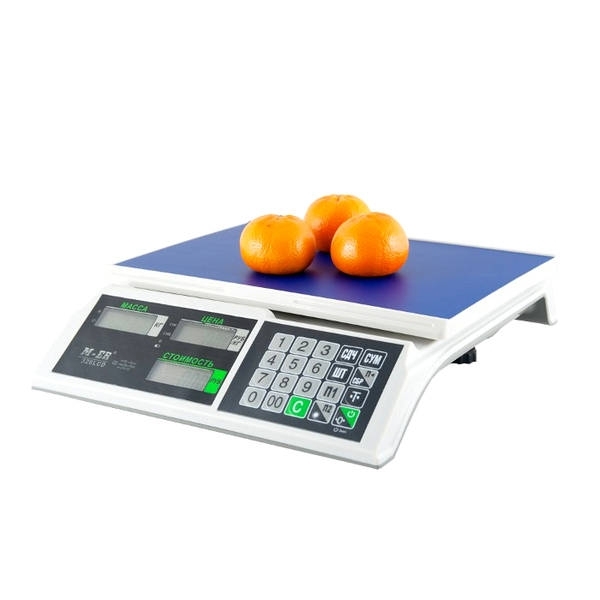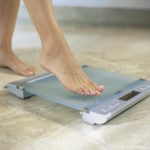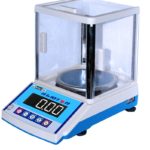 Mankind has been using devices for determining weight for many centuries - the first mention of them was discovered 2.5 millennia before the new era. Today they are used in many fields of activity, without the participation of these very precise products it is impossible to imagine, for example, trade. Types of scales have a wide range, therefore, to find out their features, you need to familiarize yourself with their diversity.
Mankind has been using devices for determining weight for many centuries - the first mention of them was discovered 2.5 millennia before the new era. Today they are used in many fields of activity, without the participation of these very precise products it is impossible to imagine, for example, trade. Types of scales have a wide range, therefore, to find out their features, you need to familiarize yourself with their diversity.
Many consumers use these devices in everyday life, but do not think about how they are arranged and how they differ from each other. To fill these gaps, just read our article carefully.
Content
Classification
According to GOST 29329–92, all types of weights are classified in this way.
- Application area.
- Weighing accuracy: There are two accuracy classes - medium and normal.
- Location - embedded devices, floor-mounted, desktop, suspended, fixed or mobile.
- The type of balancing device is mechanical, electronic or combined.
- Cargo receiving device - bunker, platform monorail, conveyor, bucket or using hooks.
- The way to achieve equilibrium is automatic, semi-automatic and manual.
All types of mechanical scales are gradually being replaced with more advanced ones, since they do not require large material investments to maintain performance. Electronic analogues have a lot of advantages, for example, in warehouses they are connected to a computer in order to enter the materials intended for use in sections of the accounting system when receiving products.
Application area
Weighing devices are used everywhere - today it is difficult to find a sphere of human activity that does not use various types of scales.
Industrial
Used at manufacturing enterprises to measure incoming cargo and manufactured products. They have a floor arrangement, because the size is quite significant, as is their own weight. Their modification is as follows:
- Mobile
- shockproof;
- dust and water tight.
The same products are installed by logistics companies at their warehouse terminals.
Crane
There are situations when it is necessary to weigh the load when moving with the help of powerful cranes in limbo. The use of such devices is justified in sea, large river ports, at the bases for the storage of building materials, freight stations of the railway. Crane scales are distinguished by weighing accuracy, as well as carrying capacity within 1-10 tons, installation method.
Automotive
They are used for weighing empty or loaded cars when they are fully loaded onto the device. They are used in the metallurgical, food, chemical industries, at various bases, warehouse storage terminals, elevators, as well as in construction and agriculture.
Pallet
Designed for weighing various cargoes on pallets - they are used wherever there is this type of cargo arrangement. The equipment is quite compact, but capable of weighing large loads. For the convenience of the operator, there is a display, a platform where pallets with loads are installed, equipped with sensors that fix the weight.
For trade
Trading scales are arranged in the same way: a two-sided display so that the seller and the buyer can observe the whole process. There are several electronic types of such products:
- Devices for trading on the shelves calculate the cost of the goods after the introduction of the price for 1 kg.
- Self-service stores are equipped with scales that weigh the goods, immediately break through the check, which necessarily indicates the weight and price.
- Filling scales are installed in the packaging department of large supermarkets, bases where a grocery set is completed for a small retail network.
- Scales for a warehouse is a rather bulky device where you can weigh loads from 60 kg to 2 tons.
- Label printing products are used for self-service stores.
In large stores, checkweights are installed in front of the cash registers, where each customer can check the weight of the purchased package.

Postage
Many readers at least once, but used the services of post offices to send any items or products of long-term storage - there are also scales that are directly connected to the computer. They can weigh a parcel up to 10 kg or a valuable letter weighing several grams, because the accuracy class allows them to determine the weight up to 1 g.
Today, in all post offices you can observe the use of only electronic products - they work offline, and the employee only needs to issue a printed receipt, to collect payment. Such products have several advantages over mechanical counterparts:
- Digital display showing weight.
- The function of the optimal choice of discreteness and limits.
- Protective properties.
- Self-diagnosis.
- Communication with a computer.
For parcels, parcels and registered letters, one type of weight, and for containers, respectively, another, but all have a fairly small error.
Appliances
In everyday life, scales are also necessary - they vary quite a lot in design, working principle and quality of materials. In the kitchen, bowls are used for weighing bulk products and liquids, platforms provide weighing of goods for various purposes and parameters. The industry produces mechanical and electronic devices for weighing food, as well as to determine the user's own weight.
Medical
It uses desktop and floor options. Since in some cases special accuracy is needed, electronic versions of products are used, which are divided into two types:
- equipped with a display and a mechanical weighing device;
- instruments having high measurement accuracy.
Scales for weighing babies are widely used - they are used in maternity hospitals, children's departments of hospitals and clinics, they are compact and also have a convenient bowl for babies. Special scales, made together with measuring growth, are used in hospitals and clinics - they simultaneously measure height, accurately determine the weight of the patient.
Laboratory
In research centers, only electronic options are used that have a connection to a computer - the accuracy of such scales is not relative and sometimes reaches hundredths of a gram. In some cases, hydrostatic weighings need to be performed to determine the exact density of solids or liquids.

Jewelry
Particularly accurate scales include products that are used in jewelry, where absolute confidence in the accuracy of indicators is needed. Experienced jewelers in the determination of carats use products where the test pressure is not more than 0.01 grams. An error of 1 g is allowed only when accepting precious metals scrap. In factories for the production of jewelry using only particularly accurate technology.
How are the scales
For convenience, we consider floor products, because they are available in almost every house, the differences are insignificant, for example, with kitchen products for weighing products within 5-15 kg.
Mechanical
That's all, like many years ago: a primitive design - a compressed spring rigidly fixed inside the product, straightens under the weight of the object and moves the arrow connected to it along the scale to the desired number.The division price for mechanical scales is 1 kg, very rarely 0.5 kg, therefore, the error of such mechanisms varies from 0.5 to 1 kg.
Minuses:
- lack of strict accuracy;
- outdated technological nuances.
Buying such products is only worthwhile when you occasionally need to check your own weight, and for those who carefully monitor their body weight, more accurate analogues from among the latest electronic devices will do.
Electronic
Initially, these devices had a similar operating principle as the mechanical version, only the digital display showed the weighing result, so cheap models today are practically no different from mechanical counterparts. The work of real electronic radically different: some measure weight using special plates, while others use voltage sensors.
These devices consist of the following main parts:
- The case, which is made of plastic or glass, because the use of any metal makes the product heavier and greatly increases its cost.
- A display or digital screen, it is designed to display the result, today models are released with storing the results and comparing them. In expensive models, the percentage of body fat, muscle and bone skeleton is displayed on the screen.
- Strain gauges are small plates located above each leg of the scales, and when we get on the platform, they are deformed, but it is impossible to determine the change in their structure with the naked eye. Overweight is distributed evenly between them, the data from each device are summarized, and on their basis the total value is calculated.
- A printed circuit board with a microcircuit directs the action of the plates and displays the result on the display.
Products based on voltage sensors are considered more advanced. The simplest sensor is a thin wiring made of copper, through which a small current is passed, under the influence of gravity, it changes the resistance and the magnitude of the electrical signal passing through it. In these devices there are no mechanical parts, the error is not more than 100 g, but there are high-precision products, only their cost is very high.
The disadvantages of electronic scales include such factors:
- they must be treated with care, because they are afraid of mechanical impact - shock, falling heavy objects;
- they are powered by batteries, which must be constantly changed.
The cost of electronic devices is much higher than mechanical analogues, which can also be attributed to negative qualities.
Characteristics of weights
According to experts, it’s almost impossible to determine the mass as a result of weighing, because there are always factors that interfere with this:
- Correct and accurate installation of the scales.
- Ambient temperature.
- The physical well-being of the operator and much more.
The error for each type of balance is individual and can vary from 1 to 100 g, it must be indicated in the product passport.
The largest and smallest weighing limits are measurement boundaries. They directly depend on the mass of the object to be weighed: for example, a carcass of a bird can be weighed on a scale with a restriction of 15 kg, but it will not be possible to determine the weight of a quarter of a carcass of a pig, as well as weighing precisely on a scale with a division price of 100 g a bag of spices in 10 g. The weighing range is the area between the smallest and largest weighing limits. The metrological characteristic of products is called the accuracy class. The price of dividing the scale of the device is the difference between adjacent divisions, it can be different, depending on the maximum weight.
Sensitivity is the ratio of the signal at the output of the measuring device to the value causing it to change, it can be relative or absolute. It is measured in the manufacture of the product in the factory.One of the main characteristics is considered to be an indicator of reliability or probability of uptime; life time; resistance to external influences, and for electromechanical and electronic options - parameters of electrical power.
Accuracy class
According to OIML, there are only three classes of them today: special, high and medium. They are assigned on the basis of tests upon acceptance of the OTC product at the factory, while the errors of the device are normalized or how much the balance can show an inaccurate result. Any scales located in a state sales outlet are checked at least once a year.
When asked by customers whether the scales are lying in supermarkets and stores, a concrete answer can be given: this can only happen if the calibration is violated. This place is sealed, and its autopsy is followed by a significant monetary punishment of all involved in the case, the seller and the leader. Therefore, owners or sellers follow other methods: they install a transparent sheet of plastic on the site for placing the goods - it weighs no more than 100 g, but given the throughput of the self-service supermarket, the result is quite tangible, but not in favor of the buyer.
findings
The range of scales is quite representative, so before you go for a new thing, find out among all the tenants of the apartment what parameters are priority for them. Experts advise electronic scales without additional functions: they will not damage your family budget and are suitable for all ages, even a very large family.



